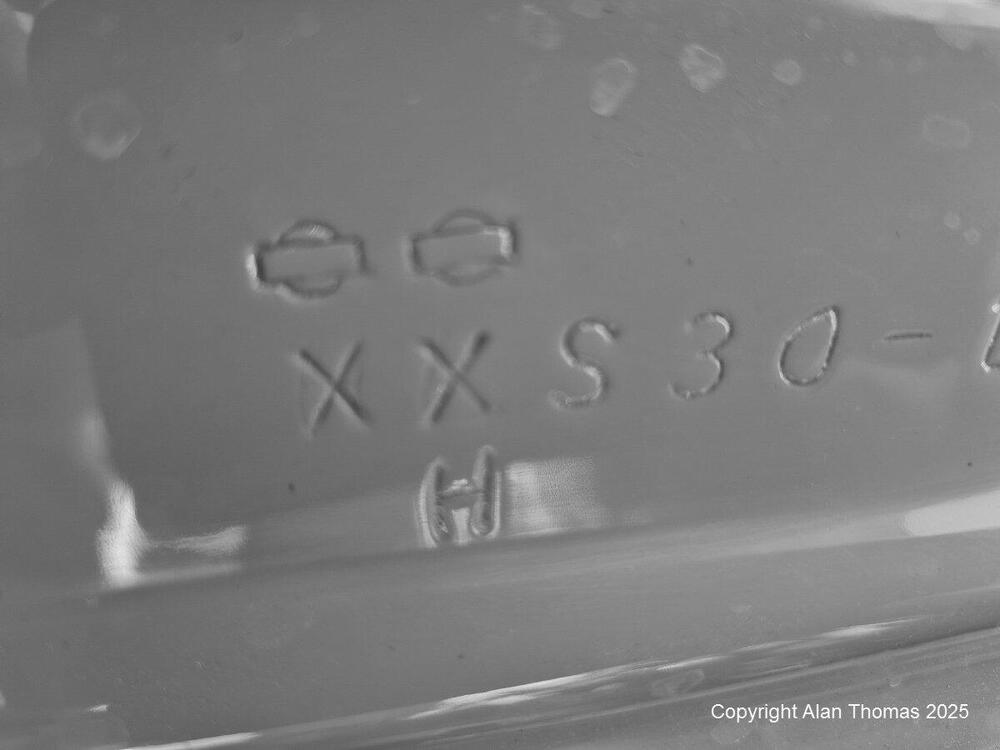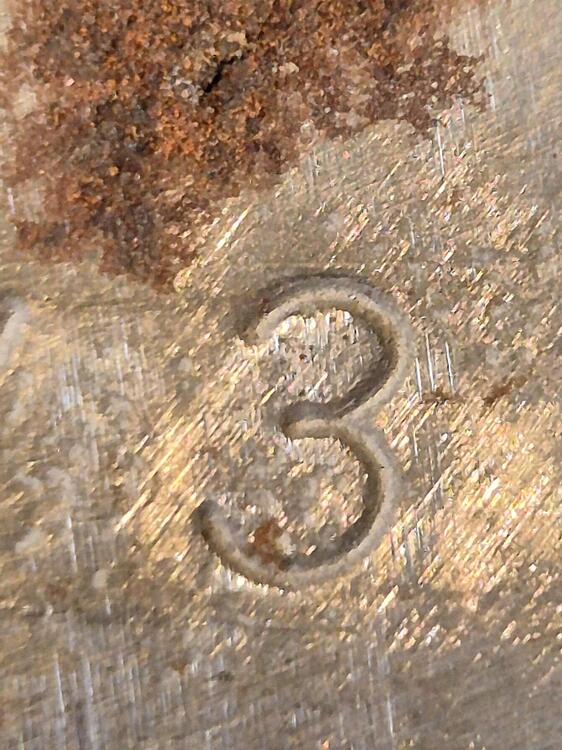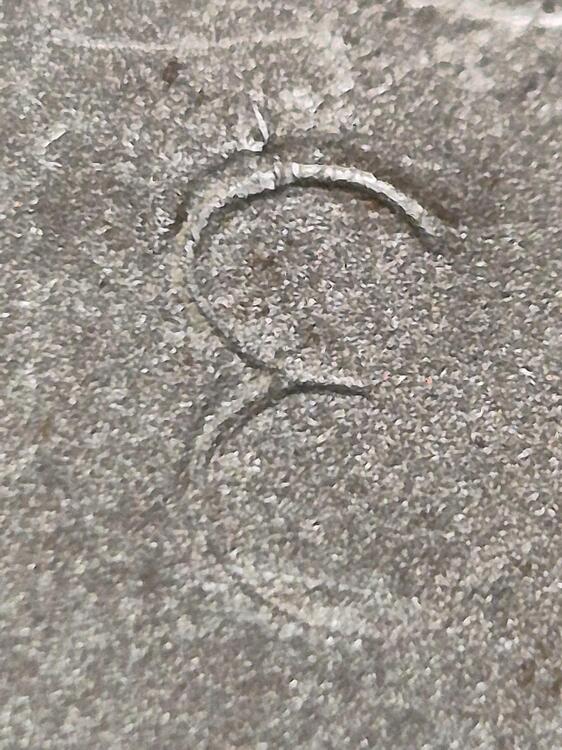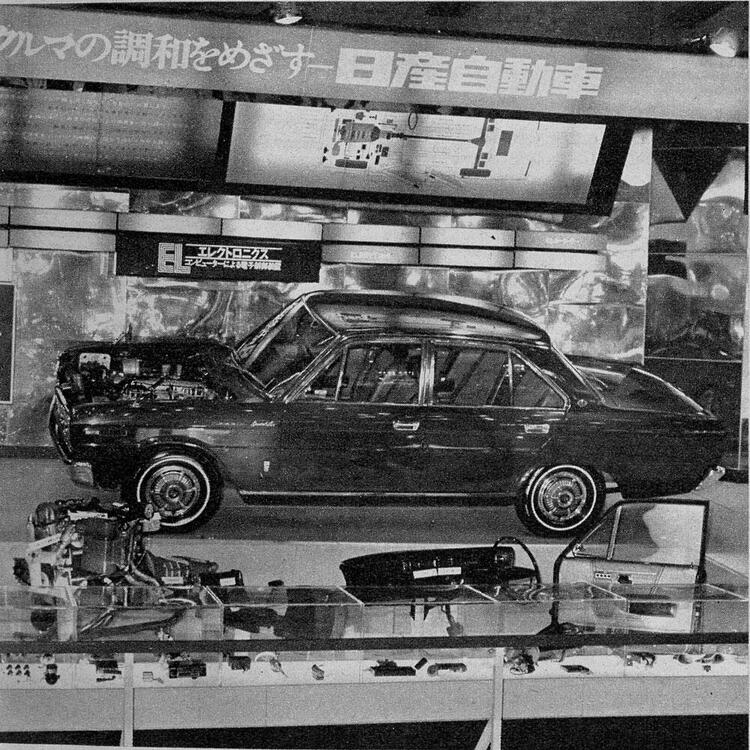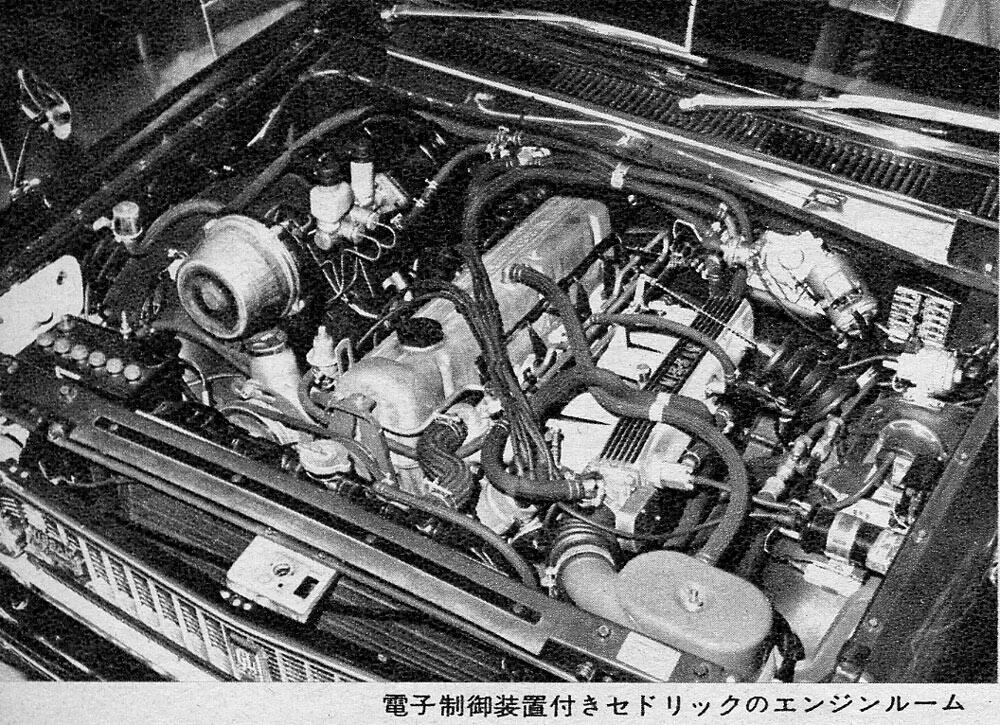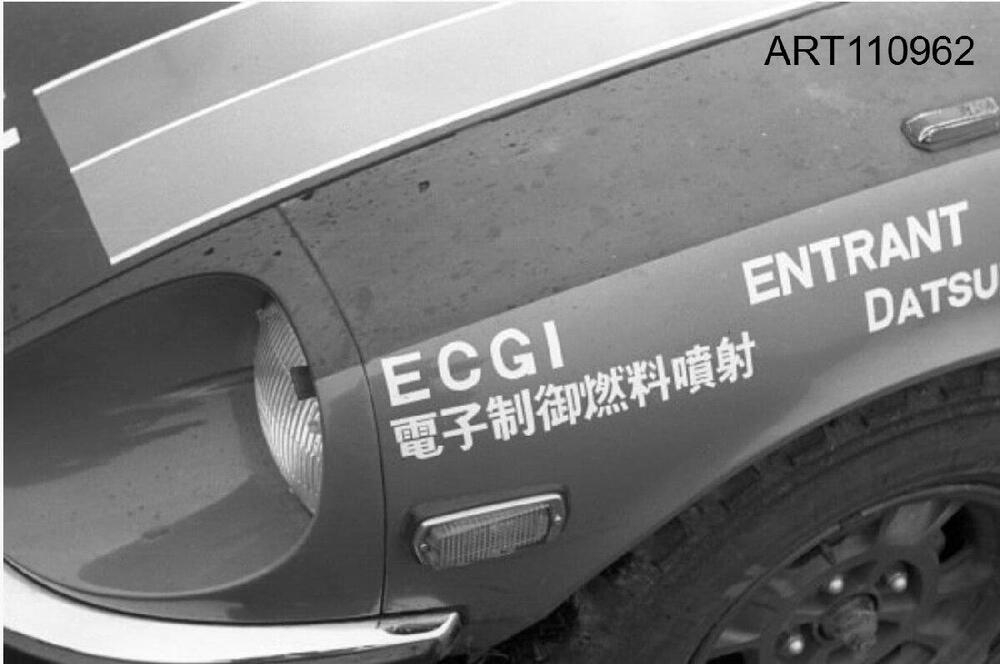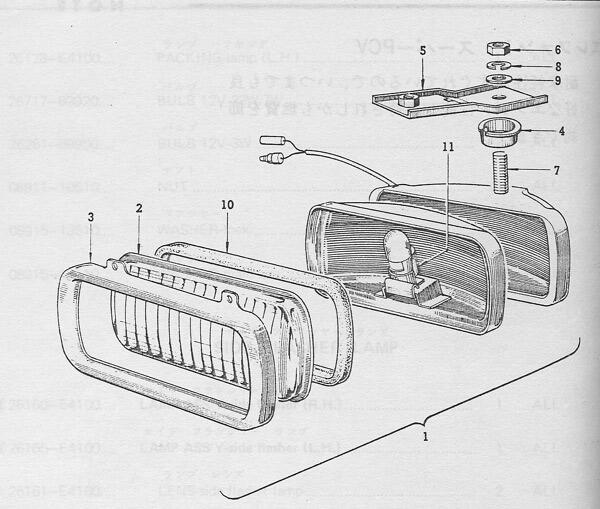Everything posted by HS30-H
-
Z's on BAT and other places collection
Personally speaking, I love it. It's a rare example of 'finger trouble' at the factory which Nissan corrected and a very human touch as such. But for others it has created some consternation and questioning, largely because it is so rare and undocumented. I'd be happy to own such a corrected number, but others wouldn't...
-
Z's on BAT and other places collection
Being devil's advocate here, who expected Nissan to go back into production of parts just for the Z Store program in the first place? Seems to me - and I was paying attention on the Japanese S30 owner/enthusiast/specialists/parts supply at the time for my own needs - that there was a whole lot of 'Lost In Translation' going on between the Z Store planning people, NMC USA, the shops doing the work and the many-headed operation that was NMC Japan. That's the only reasonable explanation. Who would embark on a project which required new parts to restore a three figure number of cars without checking on and securing the stock and/or resupply of said parts? We could easily make a case for the Z Store Program being a good idea that was - in its execution - very "poorly run", in spite of its success in publicity and PR terms.
-
Z's on BAT and other places collection
Exactly that. The engraving fixture hooked onto the firewall in a fixed position (one for RHD, one for LHD) and the operator did his stuff. 99.999% of the time he got it right. The rest of the time stuff like this happened:
-
Z's on BAT and other places collection
Incidentally, you might be interested to hear that the Japanese market FSMs use the term 打刻 ('Dakoku') in relation to the individual vehicle ID on the firewall. It translates as 'Stamping' in English. They use the same term for the engine number and the engine bay tag, when they are clearly performed with different processes to that on the firewall. Again, I would not take it literally. It is similar to saying that something is 'written' on a page when it is printed, and vice-versa.
-
Z's on BAT and other places collection
I wouldn't take that literally if I were you. Their intent was to convey information on location and form in an easily understood and digested nature for people who were used to the national vernacular of their automotive scene, not describe the process with which is was executed.
-
Z's on BAT and other places collection
Not on the S30-series Z's firewall. 'Dot Engraving' displaces metal rather than removing it. In the case of the letters and numbers we are discussing, the dots are so close together that in close-up they look like one continuous form. The deformation is visible in the reverse side of the panel. The firewall sheetmetal on the S30 is thin enough gauge that some deformation of the surrounding metal occurs (noticeably more on some letters and numbers than on others) so it is all too easy to imagine this is the result of physical - 'one blow' - stamping. It isn't. Here's a bare metal example of a Nissan S30's firewall '3' number, showing front and rear. This is classic close-form Dot Engraving:
-
Z's on BAT and other places collection
The process involved aligning a fixture to the firewall of the unpainted bodyshell (other Nissan vehicles had the identity elsewhere - for example my KPGC10 Skyline GT-R has it on the LH door sill) into which the full combination of chassis prefix and body serial number was dialled-in by the operator, and then the machine did its thing. We have seen examples of mistakes (operator error...) which have been 'corrected' by the same process and then authenticated with a Nissan 'hamburger' cipher. We can play terminology tennis between 'stamping' and 'engraving' to our heart's content but the process used was - I believe - more correctly described as 'Dot Engraving', where a punching point deformed the metal into the desired letters and numbers in the distinctive Nissan font of the period. This method - although in a much more developed and computer-controlled form - is still in use today. Here's a modern version of the machine (on the dreaded Ali Express, no less...) with a playable video: https://www.aliexpress.com/item/1005007340921417.html?dp=CjwKCAjwp_LDBhBCEiwAK7FnkgNg_pgoKEwp2vl_LmTjbAZXtPHK3lxpnCZE8Rsz8cmrvpF30NaRhxoCKVwQAvD_BwE@254613&isdl=y&aff_fsk=_okqVOWy&src=delupeUK2025&aff_platform=aff_feeds&aff_short_key=_okqVOWy&pdp_npi=4%40dis%21GBP%21616.83%21585.99%21%21%21%21%21%40%2112000040338251243%21afff%21%21%21&cn=254613&cv=466926&af= I would imagine that the somewhat laconic and haphazard nature of the late 60s Nissan Shatai results was symptomatic of the machinery being used. I wouldn't rule out the possibility that it was - along with Nissan's distinctive font - intentionally difficult to tamper with/replicate/forge. Anyway, the big point here is that when people talk about 'firewall stamping' and 'VIN stamping' it calls to mind old-fashioned letter and number stamps that would be whacked with a hammer to make their mark. Doing that on an unsupported firewall (the other side is in the cowl well...) would be pretty difficult without big deformation, and if supported it would require some other kind of fixture on the other side. In my KPGC10'S case it would be impossible on the (blind) door sill. I'd like to see a machine that could physically 'stamp' a firewall VIN on an S30 in one go (I'm imagining it to be steam-powered...) but the whole thing sounds far too impractical. The dot engraving machine seems to have been a lasting solution. This is actually a subject which we have discussed previously here on the forum. @kats even came up with a photo of the same fixture still being used on late 1980s and early 1990s Nissan Silvias (S13/S14?) but - of course - I'll be damned if I can find the thread and the image. Don't know why this place is so hard to search for something I know is here. S30 chief engineer Hitoshi Uemura gave me a copy of a period Nissan document which showed the positioning instructions for the chassis number fixture, but I was asked not to publish it (and I'll honour his request).
-
Z's on BAT and other places collection
'Course the guys who REALLY know their onions know that the bodyshell's individual identity is ENGRAVED on the firewall, not stamped... 😊
-
Z's on BAT and other places collection
If a sermon could save even one soul it would be worth preaching. I think you'd find - if you gave it the benefit of the doubt - a smattering of eager listeners in "this crowd" who would appreciate the chance to hear what you have to say. If we don't deserve it, then who does? You might look at the current exchanges on this forum and see members eagerly conversing with what appears to be an Artificial Intelligence 'bot, but over the years some of us have drilled pretty deeply into the story of these cars, the people and circumstances behind them and into their very fabric. I can think of few other open source platforms where this has been made available in the English language. Hopefully (!?) much of that still exists here and is - with effort - searchable for those who are curious and/or passionate enough to know. At the very least, put it out there before you can't. Pro Bono. Thanks.
-
Z's on BAT and other places collection
You've pretty much answered your own question there. And when it comes down to it, we'd have to judge it as a success in those very marketing terms let alone anything else. The press loved it. The project caught the imagination and support of influential figures in the North American Z 'scene' - including the kind who insisted it was a first for a major manufacturer (it wasn't) and "unique" in the auto manufacturing world (it wasn't). Those same figures still vaunt it today. We've certainly discussed the topic here on classiczcars.com many times over the years and our fellow member @26th-Z wrote what I believe is the definitive essay on the VZ cars. It was - when all is all said and done - a big deal in the story of the Z car's mid-life crisis. But as is often the case, the hype and commentary from offstage created unrealistic expectations. The misleading term 'Factory Restoration' was thrown around a lot and many swallowed it whole, including members of the specialist press. The VZ cars often get judged as though they were intended to be 100% factory correct concours restorations when that was clearly never the case. You can see the same thing happening in the current BaT auction. LOL. Another bunch of answers to your "why are the Vintage Z valued so highly?" question in there. It's the kind of people appearing in that video - and mentioned in it - who are part of the hype. High profile figures in the old Z car world, but often too the Typhoid Mary-like spreaders of bad information. Whilst looking in the engine bay of a VZ car we get the words 'Nickel' and 'Cad' plating thrown around (its mostly Zinc...) and a false story about the commissioning of re-pop braided hoses (Nishi san of Revive Jalopy in Japan was responsible for this and for many other previously unobtainable parts too). We even see a modern fuel filter pointed at as though it is some kind of ancient relic. Some typical 'Mr K Lore' thrown in for good measure when discussing early cars/chassis numbers. Larry Chen asks "why is it that the US got the early cars and how come Japan didn't get the early numbers...?" and Jaffe's answer talks about the '240Z'. Japan did get early cars (they got them earlier than the US too...) but the problem here is the congenital misconception that the 'US 240Z' is something over and above the whole S30-series Z family as conceived, planned, designed, styled, engineered and produced before the end of 1969. To the point that anything else is some kind of afterthought. We get Katayama's "PUSH" related as a one-man quest to get 'his' project made rather than the more realistic scenario of him lobbying for influence on something that was already happening. Apparently Mr Carl Beck ('Z car encyclopaedia') "can tell you how many went to England, Australia and its all very limited...", but there's no mention of Japan in their 'Z car' story. You can look at pretty much any volume - and non-volume - selling sports car of the 60s and 70s period and see the same story; volume sales in the USA. But I've yet to see any Triumph, Austin-Healey, MG or Jaguar being vaunted as 'Made Expressly For The USA'. VW shipped just shy of 400,000 Type 1 Beetles into the USA in 1968 alone, so 'Made For The USA'? Mainland USA was the biggest single potential market for just about any product of the period concerned, but I would like to credit at least some US consumers as being sophisticated enough to see through all the "we made this for YOU" type sales slogans. So, why are the Vintage Z cars valued so highly? It's in large part due to the influence of the kind of people who had eight of them, and sold six of them to somebody who now has eight. Larry Chen will make a video about them! People listen, and look up to, movers and shakers like that. Our old BaT friend Larry Stepp (he's a BIG fan of the classiczcars forum) made a prediction the last time this current BaT auction VZ car was up for sale. He said it would be worth 250k USD in a few years. There's the hype. It's not so much to do with the physical details of the object (which is not too shabby, to say the least), it's the perceived kudos and status within a fairly small cohort of people who are looked up to as sooth-sayers and mystics. Buy "one of the 37" and - hey! - maybe you'll even get the pleasure of putting the hose clamps on 'the right way round'...
-
Euro / JDM taillight wiring
Both upper reds operate as side lights and brake lights.
-
Euro / JDM taillight wiring
No, the Japanese market parking light system has its own bulb in each rear lamp unit. It's the one that is otherwise blanked off with the 'P' plug/grommet in the centre of the lamp unit.
-
Z's on BAT and other places collection
Nissan were caught out by changes to motor vehicle 'Construction & Use' regulations with regard to lighting for 1971-up in several European markets. Height from road level was particularly difficult to solve. The regulations even required changes to the illumination of the rear license plate. Of course such regulations applied to NEW cars and many private owners took the opportunity to move these aesthetically unpleasant front turn signals to a position UNDER the front bumper, or - even better - to revert to the configuration that the gods originally intended... A legacy of precedence. You may have heard of Mr James Watt? He found it necessary to use a unit of measurement in order to compare the power of steam engines to that of working horses. Of course he used the IMPERIAL system as METRIC horsepower didn't exist at that point, the Industrial Revolution not being a Continental phenomenon... You may also have heard of Sir Isaac NEWTON? That's him in your Nm measurement. (Posted from The United Kingdom of Great Britain and Northern Ireland, a small place off the coast of mainland Europe which used to rule much of the world for a while... LOL)
-
Z's on BAT and other places collection
1971 United Kingdom market HS30 'Datsun 240Z' with low recorded mileage. The usual inaccurate salesman's flimflam in the Bonhams write-up, but a nice car: https://carsonline.bonhams.com/en/listings/datsun/240z/62327cfd-fa98-45e5-9035-b38d20db87e2
-
My two swiss S30Z Fairlady Restoration build thread
Very nostalgic for me. Back in 1995 I was asked to accompany a couple of Japanese motoring journalists to the Le Mans 24hrs race to assist in press coverage of NISMO's GTR-LMs and their participation in the race for Club Le Mans. We had pit access, press room access, full catering and hospitality. A big contrast to my first visit to the LM24hrs in 1970 when I only ate frites and crepes and managed to catch just a few hours sleep whilst soaked through, laying on newspapers by the side of the track...!
-
Check out this ATK crate L28 engine on BaT
Japanese company. Try searching in Japanese: https://atk.co.jp/rebuild/
-
Gas Tank Order From J30 in Netherlands
Any chance of correcting this thread title's 'J30' to 'S30.world'? Might help future searches...
-
Wire identification
ECCS was first used on the 430-series Nissan Cedric in Japan (June 1979). ECCS stands for Electronic Concentrated (Engine) Control System. Electronically-controlled (via an ECU) injection was introduced on a 230-Series Nissan Cedric 'EL' model at the 1970 Tokyo Motor Show: Nissan was actively using a system ECGI (Electronic Controlled Gas Injection) back in 1971. Nissan group affiliate Diesel Kiki licensed the Bosch D-Jetronic system patents and re-engineered it to use with double and triple sidedraught throttle bodies on competition cars:
-
The Development Story & Specification Of The European Spec Datsun 240Z
Here's another great S30.world article, this time focusing on the development of the 'Euro' spec Datsun 240Z, exploring the circumstances which necessitated its creation and the people behind it. It includes some - precious! - original hand-written development note documents which we are privileged to have access to after all this time, thanks to our fellow member @kats Very nicely put together and written up by another of our fellow members here Nils @JDMjunkies.ch Tip of the hat to Florian at S30.world too. This is a topic not often acknowledged let alone discussed, and yet it is a fascinating window into a significant part of the S30-series Z's family tree. Recommended reading: https://s30.world/articles/european-spec-datsun-240z
-
1971 HLS30-14938 "Lily" build
As far as I understand it (and I've seen the same thing on several different makes of old cars) they act as a spring/damper, which has a positive effect on the sound quality and also insulates the mountings from high frequency vibration when the horn sounds. But they certainly have an air of late 1860s rather than late 1960s, so I empathise with your curiosity.
-
Z's on BAT and other places collection
It's quite hard to pin a current market value on a 432 or 432-R, but - in Japan, where the majority of them reside - they can change hands privately for stratospheric (in S30-series Z terms) figures. The 432-R is often valued at three or four times that of a 'normal' 432, but there's a limited data reference as so few Rs are sold 'on the record' and in public view. Japanese buyers and sellers can be very secretive (most individuals are circumspect with regard to their personal financial circumstances) and quite a few of these cars have been owned by people who are now of senior age, coming to the end of their safe driving life. That's a situation that can be taken advantage of by younger family members, friends and/or people in the old car business. @kats can tell you of a case late last year where a genuine 432-R, owned by an elderly gentleman, was bought at an unusually low price (by somebody in the right place at the right time) and was very soon being 'flipped' at a three or four times multiplied figure. Sad that the elderly vendor didn't get a more honest buyer. I feel that it's important for these cars to go to good homes, which I guess is not always about money. And that's something we can also say about this 'PS30-00218' for sale via Takeey's. It may well have a cloud over its authenticity (which all hinges on whether it's chassis number has been altered or not...) but it exists, is an attractive car in it's own right - nothing wrong with a 432-R 'tribute'/'replica' - and as long as any new owner knows exactly what they are buying, and the price paid reflects that, then OK. It just needs to find that 'Mr Right'.
-
Z's on BAT and other places collection
Hi Steve, This is a well-known - perhaps I should say somewhat 'notorious' - car with some er, baggage... I have it down in my notes as having a "re-stamped" (re-engraved?) firewall chassis number, and there has been a fair amount of gossip about the car between interested parties over a few years. I have photos of the car from when it was for sale in 2018, so it's been knocking around ostensibly 'For Sale' for a good few years now. The website you link to is actually for a somewhat parasitic forwarding company, hoping to get in on the sale of the car and the shipping/handling thereof and taking a margin from both seller and buyer. Best to look at the car with the actual seller, well-known Japanese old car vendor 'Takeey's' based in Hamamatsu City, Shizuoka prefecture. Here's their website: http://takeeys.com/index.html ...and here's the car for sale (price = 'ASK'...) on the Takeeys official site: https://www.goo-net.com/php/search/spread.php?baitai=0600834&area_cd=15&goo_car_id=700060083430240917001&ef_flag=1 Chassis number 'PS30-00218' is a genuine chassis number, but - more specifically - it is a known and official chassis number for a PS30-SB 'Fairlady Z432-R', the very limited production super lightweight variant of the 432. Genuine 432-Rs are on another level in terms of rarity, desirability and market value in comparison with 'ordinary' 432s. However, there are question marks around this particular car. You will note that Takeey's are not claiming it in writing as being a genuine 432-R. They are selling it as a '432', which it almost certainly is. The question is whether a standard 432 has been 'sexed up' with many 432-R specific parts and details and has - nefariously - assumed the identity of 'PS30-00218' which was a genuine 432-R. We can spot many 432-R specific details and parts on the car (console delete, trans tunnel-mounted ignition switch, plain vinyl trans tunnel cover, spare wheel well delete, 100 litre tank, etc etc etc - there are too many to list) but only a genuine 432-R would have the super lightweight type bodyshell with its thinner gauge sheetmetal. Almost impossible to fake that. @kats will be able to tell you much more than me, and perhaps a little more diplomatically!
-
S30 World 'Test Drive' article
S30.worldS30.world - S30.world – test driveS30.world – test driveWorth a read.
-
1970 Wiring Diagram
Indeed, it translates as "Fog Lamp Switch" and other factory literature identifies them as being an extra-cost showroom option.
-
1970 Wiring Diagram
That's what's known as confirmation bias. The "empty hole" was designated for the optional E4100 fog lamp switch, as I have already pointed out. The E4100 fog lamp switch - literally - could not go anywhere else. The design of the switch alone dictates that. Sorry for the "single comment in a forum" (hopefully you can't see my eyes rolling....). I'm writing this after you have posted a couple of old threads - active several years before you joined the site - which discussed the factory fog lamps in some detail, with a fair chunk of the posted data coming via Yours Truly. I suggest you spend a little time actually reading and understanding it. There's gold in them thar hills... But he is - of course - mistaken. The other option is that he knows full well that the factory fog lamps were offered in markets other than the Japanese domestic and - get this - he's trying to sell you something. It wouldn't be the first time that somebody stretched the truth a little - or didn't manage to tell the whole truth - when telling us about these cars. Does "Made Expressly For The USA" ring any bells...? Here's a scan of a page from Nissan's 'R-Drive' Export market parts catalogue C-0010R. The components are - just like they were in Japan - listed as 'Option' parts: We could - indeed we have, back in the days when this forum was a little bit more engaged by matters historical than in reading spark plug runes - discuss many other monkey tail appendixes and "mystery" (to some more than others...) holes and fixtures on these cars that are there for a very good reason. As for the factory Fog Lamps, the component parts existed, the wiring was there in the harness to run them, the mounting points were pre-drilled in the front bumper to accept them and the indentation and doubler was there on the dash to accept the switch, from October 1969. Yes, they moved the Cigar Lighter up there later. Doesn't mean that they wanted it there all along. I think the problem here is that you have come up with a theory and are now engaged in shaping evidence so that it fits. Sorry but your 'F Knob' theory isn't even going to float, let alone fly.






